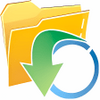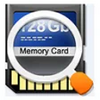Synchronise files between different directories
Synchronise files between different directories
Vote: (1 votes)
Program license: Trial version
Developer: Usinternet
Version: 1.93
Works under: Windows
Vote:
Program license
(1 votes)
Trial version
Developer
Version
Usinternet
1.93
Works under:
Windows
Pros
- Efficient file synchronization based on timestamps
- Integrates smoothly with Windows shell and file structure
- Customizable settings for tailored synchronization control
- Minimalistic interface ensures straightforward usability
- Resource-efficient, does not impede system performance
Cons
- User interface may appear overly simplistic for some preferences
Simplify File Synchronization with Compare Copy for Windows
Compare Copy for Windows is a synchronization tool designed to maintain consistency and order within your digital file archives across various devices and folders. As the demand for seamless access to data regardless of location increases, the utility of software like Compare Copy becomes evident.
Streamlined Synchronization Process
The primary functionality of Compare Copy lies in its ability to synchronize files by assessing the date and time stamps. Only those files with a newer timestamp in the source directory will replace their older counterparts in the destination folder. This approach ensures that users do not inadvertently overwrite current files with outdated versions. The software is adept at managing the synchronization process with minimal user intervention, though customization options are available for those who prefer a more tailored operation.
Customization and User Control
While the basic operation of Compare Copy is straightforward, the program offers several configuration settings that users can adjust. This flexibility allows one to have greater oversight and define specific behaviors during the synchronization process, catering to unique needs or preferences one might have. Whether you're seeking more granular control over what types of files are synced or need to manage permissions, Compare Copy provides a suite of options to cater to those demands.
Integration with the Windows Shell
One of the strengths of Compare Copy is its seamless integration with the Windows environment. The program uses the same file structure and shell as the Windows operating system, making it feel like a native feature that users are already accustomed to. This congruity with Windows ensures a swift learning curve and a level of intuitiveness that promotes user adoption and efficiency.
Interface and Usability
Where the application could draw criticism is its user interface, which, to some, may appear rudimentary or outdated. However, this does not detract from the fact that Compare Copy performs its intended task with unexpected efficiency. The no-frills nature of the interface could, in fact, be construed as an advantage, keeping the functionality straightforward, minimizing distractions, and focusing on the core objective—file synchronization.
Overall Performance
Despite any visual simplicity, Compare Copy holds its own as a reliable tool that enhances the productivity of individuals who manage files across multiple locations. The application runs efficiently without hogging system resources, which is crucial for those who prioritize a smooth-running system. Additionally, its intuitive use of the familiar Windows file handling paradigms reduces potential friction for new users.
To conclude, Compare Copy for Windows emerges as a practical solution for those looking to maintain file consistency across their digital landscape. It may not boast an extravagant interface, but it performs its functions effectively and reliably, positioning itself as a worthy addition to the data management toolset for Windows users.
Pros
- Efficient file synchronization based on timestamps
- Integrates smoothly with Windows shell and file structure
- Customizable settings for tailored synchronization control
- Minimalistic interface ensures straightforward usability
- Resource-efficient, does not impede system performance
Cons
- User interface may appear overly simplistic for some preferences




